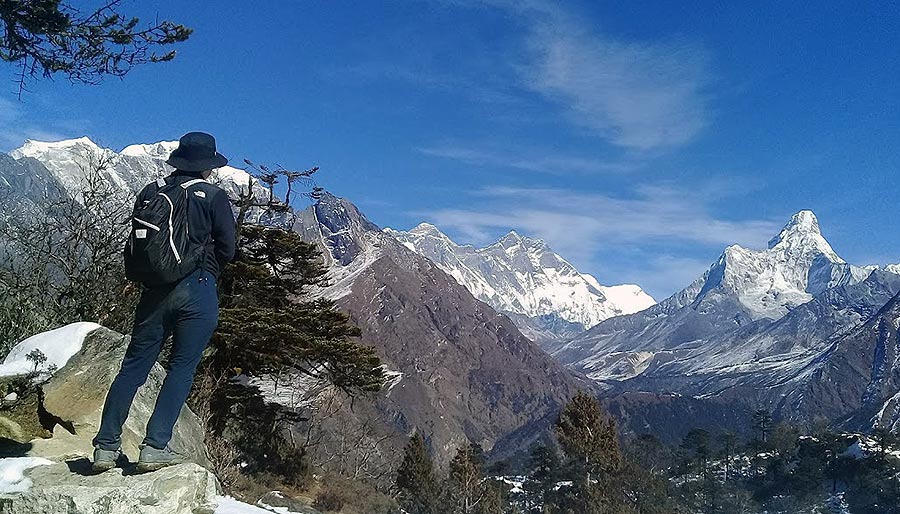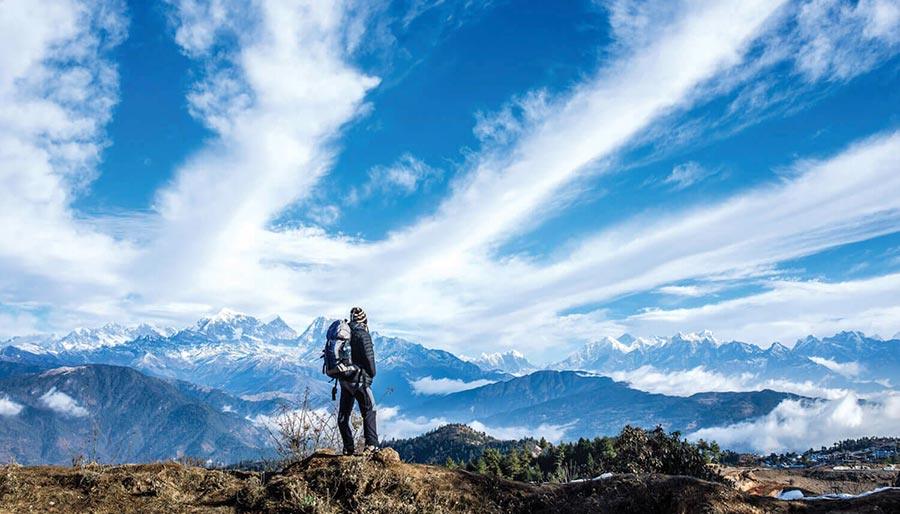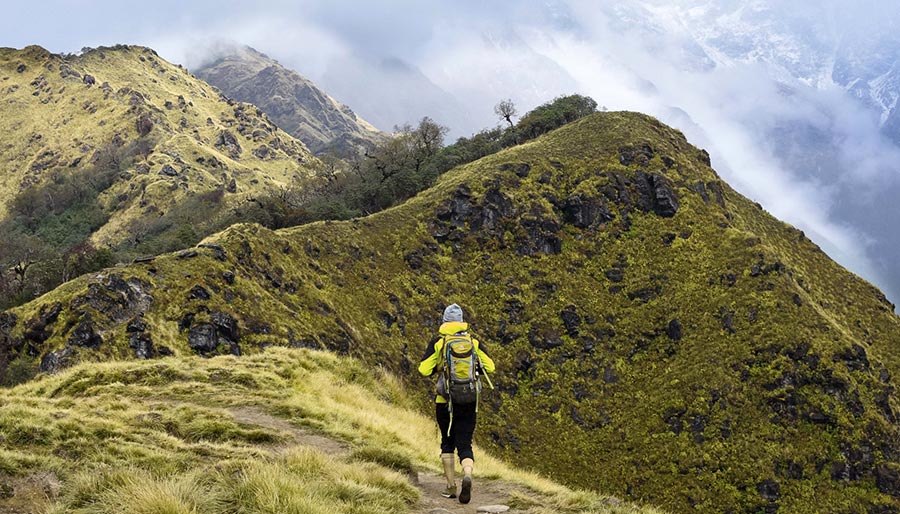Trekking Nepal Information
Trekking in Nepal: All You Need To Know is a blog post that aims to provide brief details of the trek in Nepal. High Altitude trekking through the Himalayas is the preliminary attraction of Nepal. While trekking in Nepal, you require to have some of the essential information to ease your travel. Experience of mountain cultures, scenic beauties, and touching the skies from some apex points is life-changing. Either one is a frequent traveler, novice, or new hiker, who loves trekking in Nepal. This blog intends to provide some Nepal trekking information for your knowledge.
Do you know, what is Trekking?
Multiday hiking on a typical trail in Nepal is often understood as trekking. Either it can be at lower elevations or higher altitudes up to 5000 meters above sea level. However, the trekking trails of Nepal include crossing high mountain passes up to 5500 meters or more. The trekking trails of Nepal are characterized by combined attractions of nature and culture. Scenic mountain vistas, crossing several rivers, and forests, and hiking the narrow adventurous trails are the common features of Nepal’s trekking trails.
The trails at lower elevations are often stone stairs winding through green scenery. However, the trails at the higher altitude are natural and rugged.
Trekking is generally a multi-day hiking activity in the high elevation that ultimately leads to the foothills and base camps of the high mountains. Some of the major trekking trails of Nepal follow the trans-Himalayan trade routes of Nepal connecting the northern mountain region to the southern plains of the country. Travelers will have a rich travel experience after trekking the mountain routes of Nepal.
Popularly there are three major trekking regions in Nepal; the Annapurna region, the Everest region, and the Langtang region. Besides, there are several other trails in the eastern and western regions of Nepal. Mainly, the trekking trails fall under the conserved areas of the northern border. The trails of Manaslu, Manang, Mustang, and Dolpa are much-loved trekking destinations. Similarly, hikers can choose short and easy trails around Kathmandu and Pokhara valley.
What are the accommodation options During Your Trek?
In the beginning, almost all the trekking trails of Nepal have less developed infrastructures with a negligible number of hotels and lodges. But nowadays we have more teahouses with basic facilities in all parts of the trails. So, travelers can trek most of the trails as Lodge to Lodge trek. The lodge-to-lodge trek is called teahouse trekking trails. The classical destinations of the Everest Region, the Annapurna, and Langtang regions have teahouses on the trail. In between the major campsites, a small teahouse serves as a lunch point with a minimum number of lodging facilities.
Teahouse lodges are hostels with basic facilities that cater to trekkers. The major hubs of trekking trails like Lukla, Namchebazar, Syabrubensi, Muktinath, and Jomsom are some of the places that have more standard lodges. The lodges in this area have more rooms with attached bathrooms. Whereas the lodges in other parts of the trails might have limited rooms with private bathrooms.
The rooms are clean, and available with twin sharing beds. At higher altitudes, rooms have insulated walls with wooden planks. The beds have a comfortable mattress, a pillow, and a blanket. The rooms do not have a heating system. Instead, dining halls are larger with a central heating system to keep them warm. The trekking lodges are often referred to as teahouse lodges as they are developed from the concept of teashops and resting shelters.
The off-the-beaten-path trails of remote destinations might not have lodged. Travelers have to set up their camps for the overnight stay. These sorts of trekking are called camping treks. Camping trekkings involves carrying logistics and is relatively more costly as you need to carry food, cooking fuel, and tents with the help of porters.
Things to expect during the trek
Trekking is a combined experience of culture, nature, and adventure. Trekking will pass along the ethnic settlement where they have the opportunity to witness the local lifestyle and culture. Nepalese societies are rich in cultural diversity. The unity in diversity is a unique feature of Nepalese societies.
The trekkers can enjoy the taste of local foods, and special cuisine prepared during their special occasion. It is worthwhile to taste the local dishes to enrich your travel experience. Special celebrations that undertake only during the festival time are the unique attraction of the local communities. You can plan your trip as per the festival calendar to meet the particular festival dates of your destination. Generally, the major festival is celebrated during the Autumn and Spring seasons in Nepal.
Besides, natural beauties, greenery, and scenic mountain view are the major attractions to expect during your trek in Nepal. Autumn is paddy harvesting time at a lower altitude. The season is more colorful with a golden paddy field. Whereas the Spring season is colorful due to blooming rhododendron forests. Expect to hike the rugged trail, steep stairs, and long multiday hike in high altitude.
You may mentally prepare for hard physical exercise, and prepare yourself to cope with Altitude Sickness symptoms. Follow proper acclimatization itinerary programs to adapt your body at high altitudes.
Trekking Regions
The high Himalayan section running along the entire northern border of Nepal has several trekking routes. The region of Annapurna, Langtang, and Everest is more popular among others. Besides that, Nepal’s trekking trails are world-famous for their unique attractions. The trails are a part of all the mountain climbing routes leading to the Himalayas. The other trekking regions include the mountain conservation area and the National parks of the country. Kanchenjungha, Makalu Barun, Sagarmatha, Gaurishankar, Langtang, Manaslu, Annapurna, Rara, and Khaptad are the main trekking regions of Nepal.
Each trekking region has developed several trekking routes depending upon the length of trek days and difficulty level. These trekking regions are rich in cultural aspects, and natural attractions. Local temples of each region are also the major pilgrimage site that attracts devotees from around the country.
Trekkers can hike for a single day for 3-6 hours in short. Whereas trekkers can explore the region with longer trekking itineraries for more than 20 days in the same region.
Meals during Nepal Trekking
Available food is a major concern whenever we go on a long journey. All of us may love to taste the local food to enrich our travel experience. And also miss their own’s food items while staying out of the home for a longer time. The trailheads relatively have more options on the food menu than on the trail. However, the general trekking menu includes food including other western meals. You can either choose your food from the available menu or enjoy the easily available DAL BHAT. Dal Bhat is a local Nepali dish that comes in a set of rice, lentil soup, seasonal vegetable curry, and pickle. It is a balanced and heavy meal that is suitable whenever doing heavy physical activity. Besides that, the trekking meals include different dishes of noodles, pasta, locally prepared bread, fried rice, potato items, and vegetable curry. Although we encourage supporting the local economy and to reduce the use of cans and plastics in the trekking route. Packaged foods are also available on trekking routes as an option.
Similarly, Dumplings, noodles soups, and fried instant noodles are very common in all the trekking routes. They have a different menu set for Breakfast, Lunch, and Dinner but use to serve as per the guests’ choice.
Best Trekking Season
Being a mountainous country, the terrain of Nepal varies with altitude. There are direct effects of the season on the weather pattern of Nepal and that also affects the movement of people. Spring (March-May) and Autumn (Sept – Nov) are the two best travel seasons in Nepal.
When the monsoon hits the country in summer it is challenging to travel due to rain. The monsoon rain results in landslides and flooding in the hilly reasons cause difficulty in people’s movement. Also, the cloudy and uncertain rainfall disturbs human activity during the season. However, the regions beyond the high Himalayas are best to visit during the monsoon season. As the regions fall under the rainshadow due to the high Himalayas, the regions get less rainfall during this time. They are colorful, greener, and attractive during monsoon. Area like upper Mustang, Manang, Dolpo, etc is worthwhile to visit during summer.
The trekkers willing to hike in the offseason can come for Nepal trekking. The skies are clearer but might have to expect colder weather and frequent snowfall. Sometimes the heavy snowfall interrupts the trail making it inaccessible. The high passes are blocked by the piling up of snow. But the trails have very little traffic during the winter season.
Related article: Best time to go for Everest Trekking
Weather conditions and temperatures while trekking
The weather conditions and temperatures while trekking depends on the travel season and elevation of any place. It is naturally warmer in the lower elevation than in the higher altitude. Winter is relatively colder than other seasons. The mountain basecamp falls below the freezing temperature on days and nights through the afternoon is a bit warmer. The temperature in the high altitude dramatically falls with the rainfall.
Hiring a trekking guide
It is highly recommended to hire professional trekking while trekking in Nepal. Safety is a must thing to consider while hiking remote lands. You can visit a registered trekking/tour company to hire such guides and assistant porters. A local guide is familiar with local trails, and immediate situations. They know the local culture better than other people know. It is also a good way to support the local human resources and local economy.
Permits and Entry Fees
The checkpoint located at the entry points of each trekking destination demand to present an entry permit to trek the region. The permits include National Park and Conservation entry permits. In addition, special trekking permits are required to enter the controlled and restricted areas. Besides that Trekkers’ Information Management System Card is also a necessary document to present at the checkpoints. You Operator arrange all your necessary trekking documents before the commencement of the trekking program.



